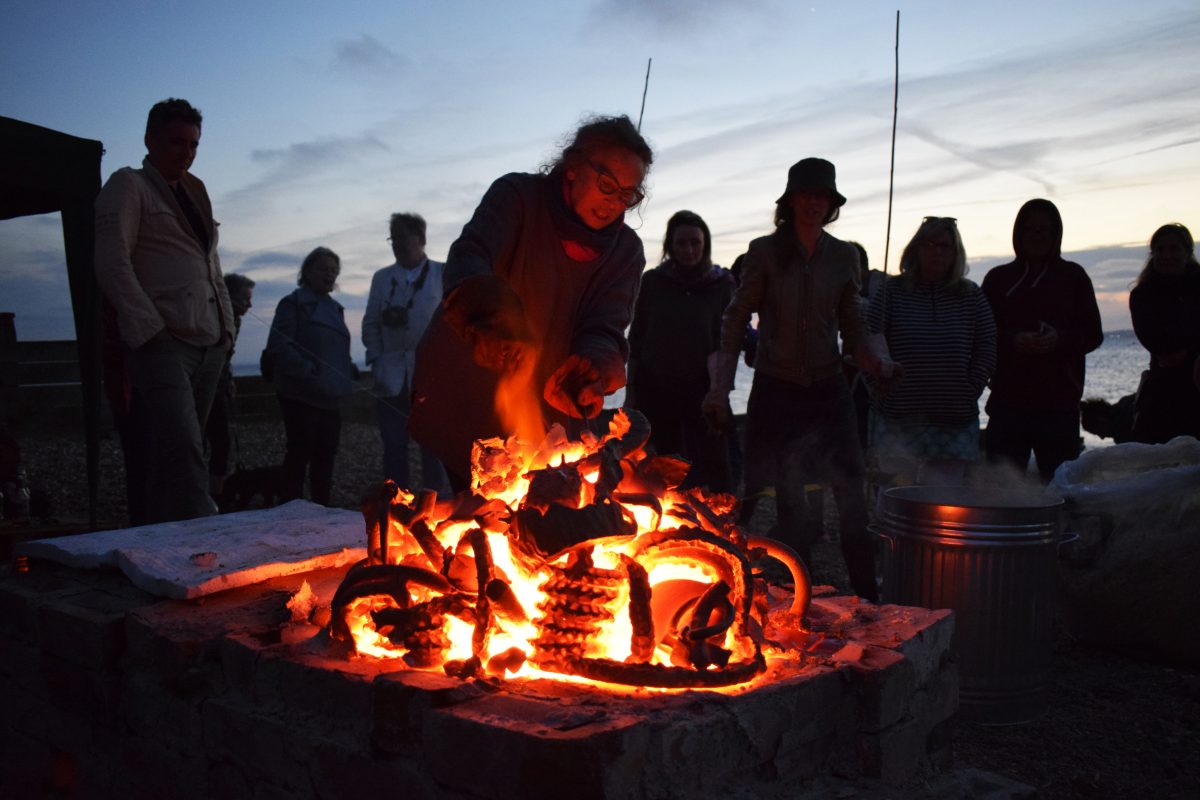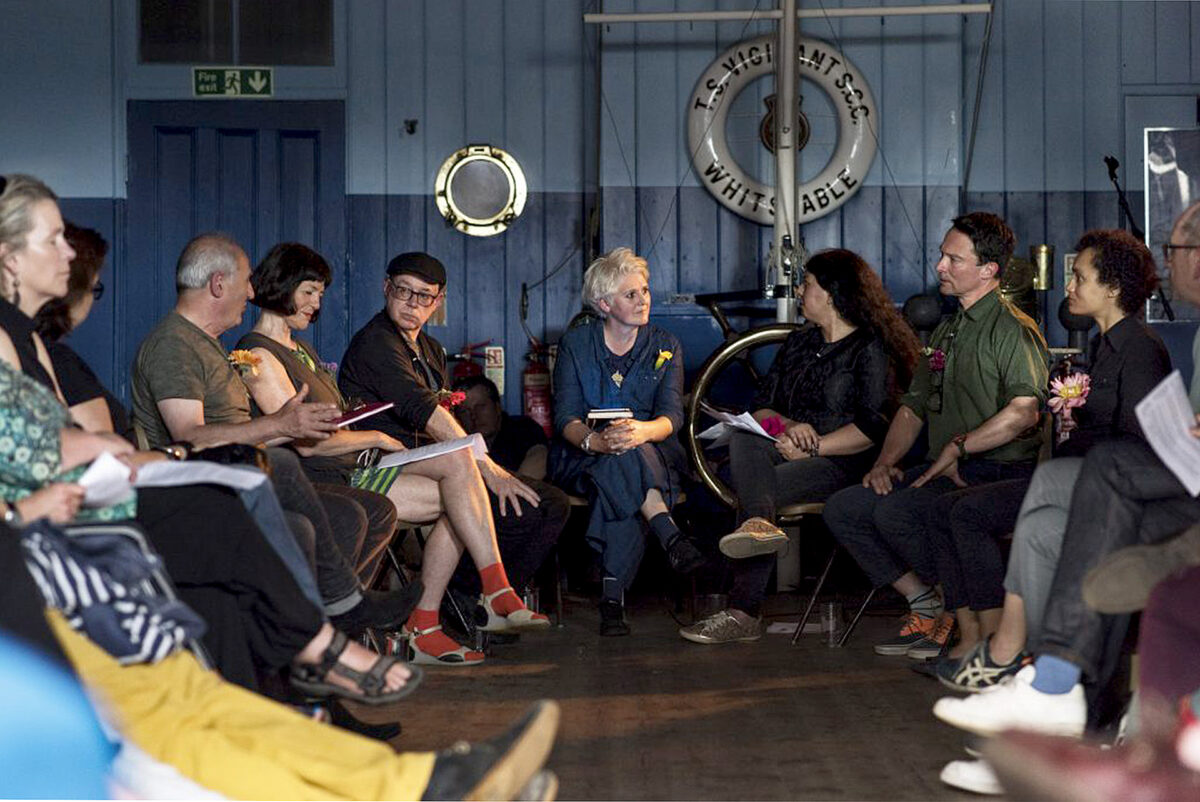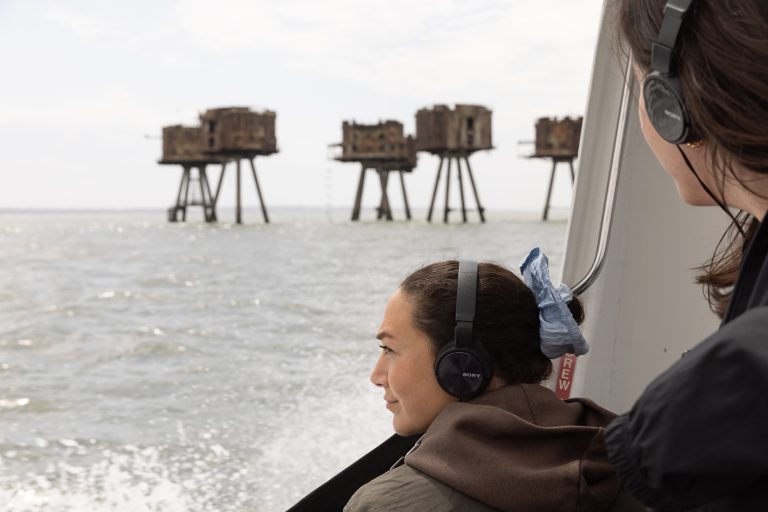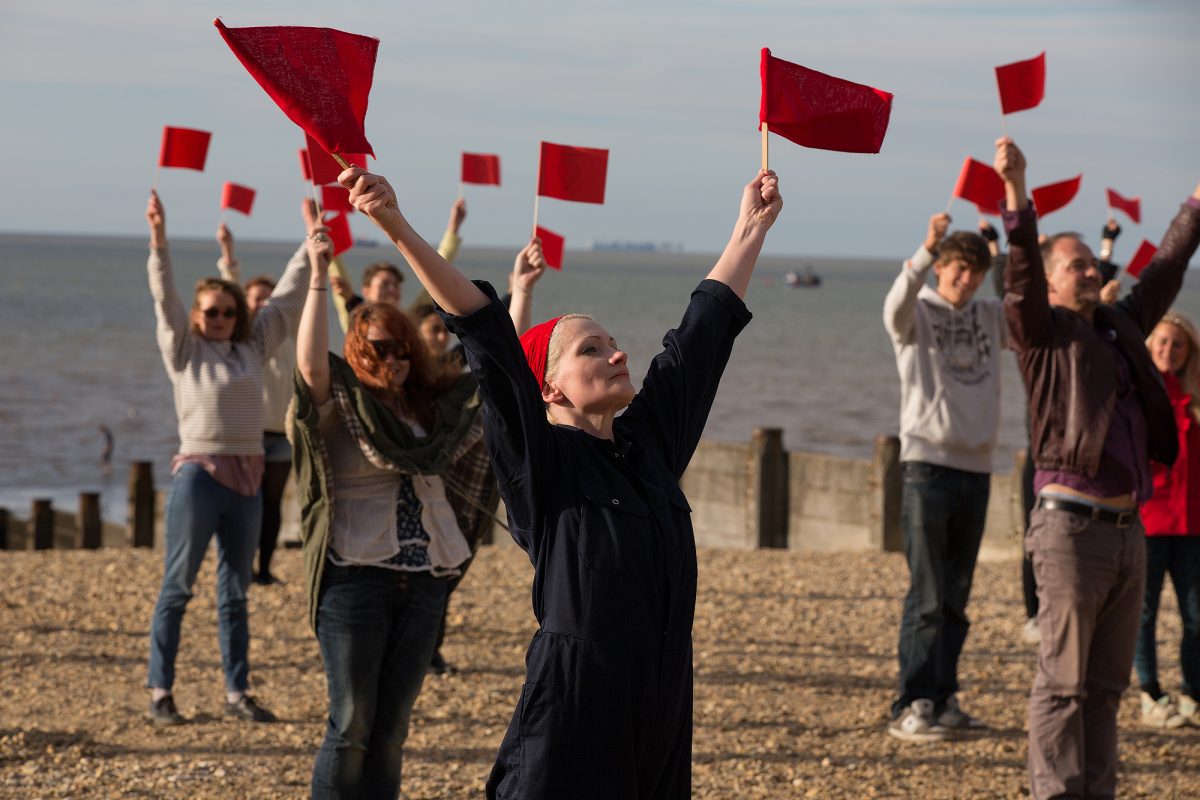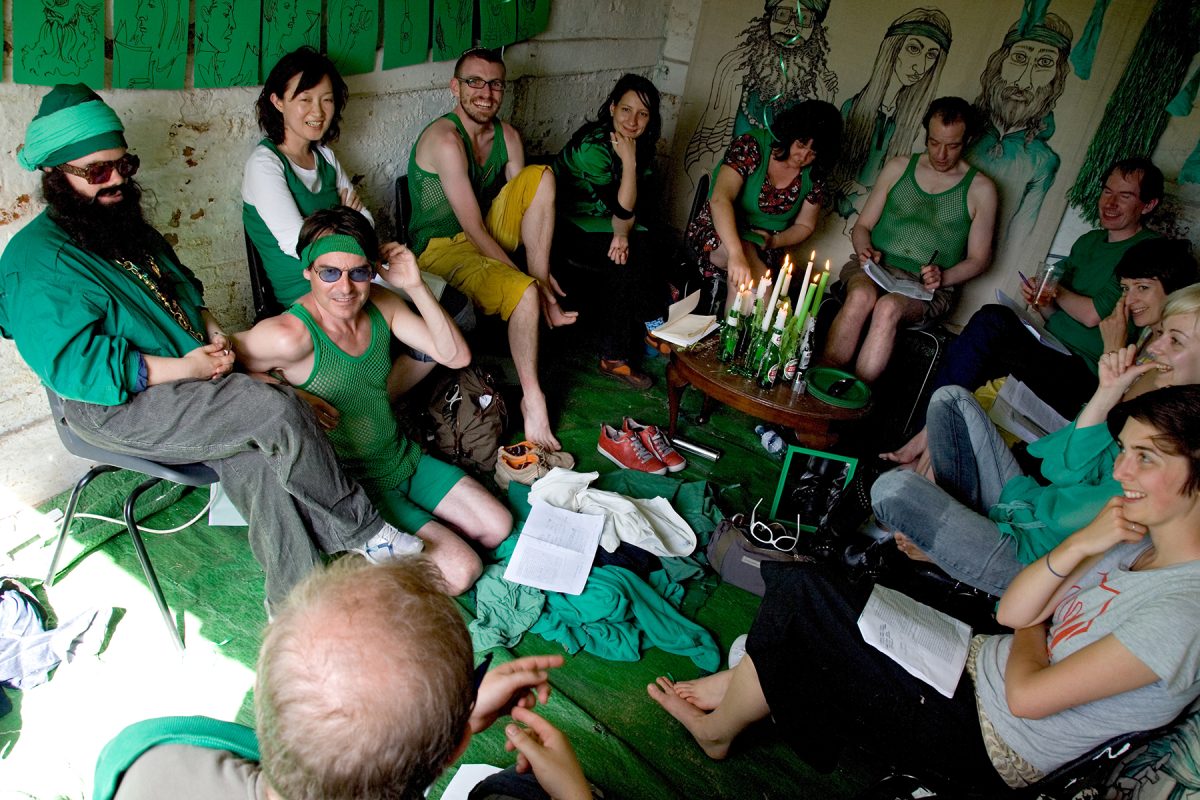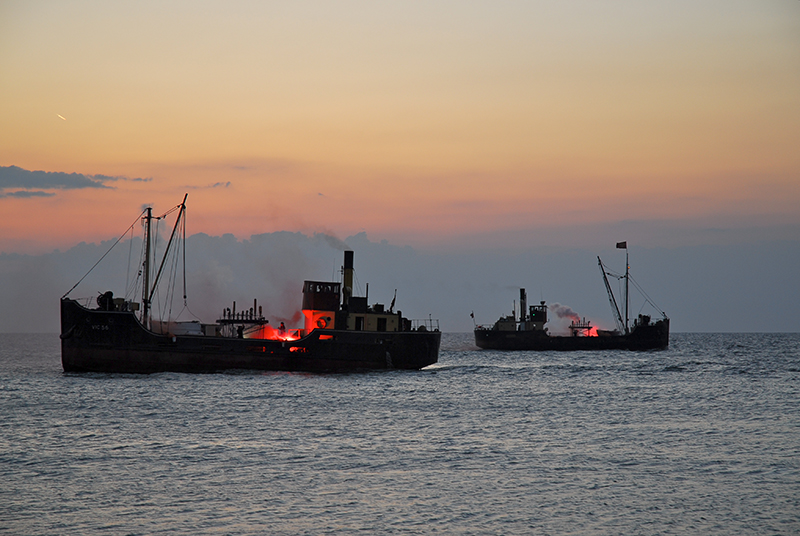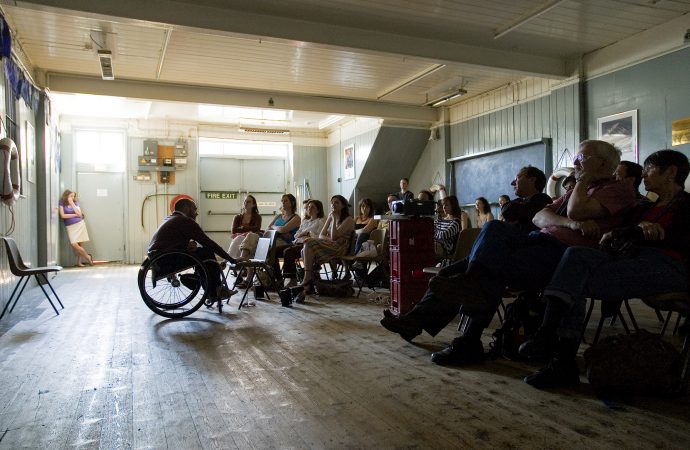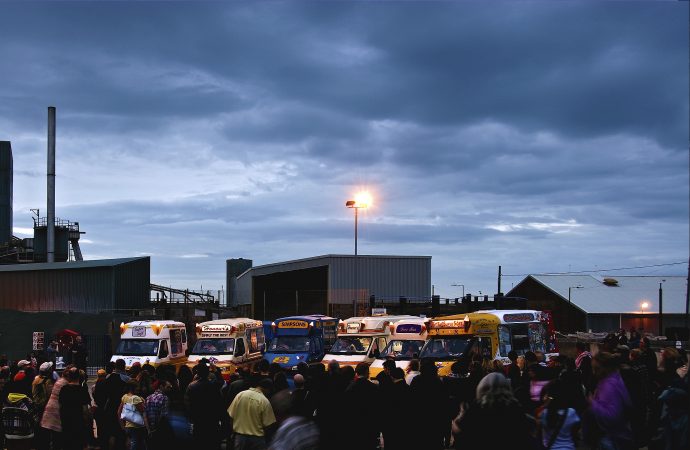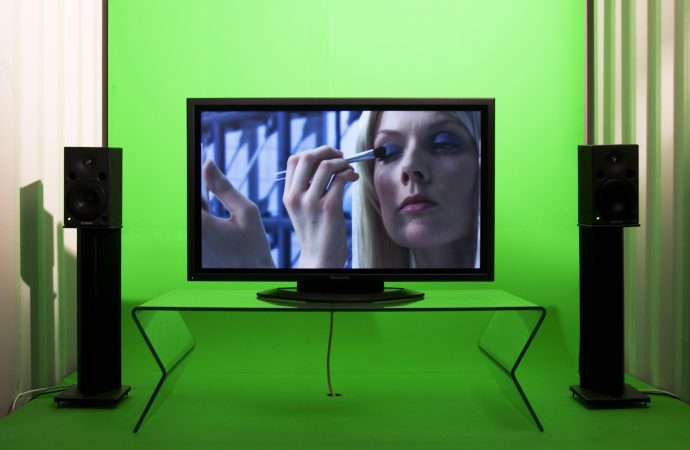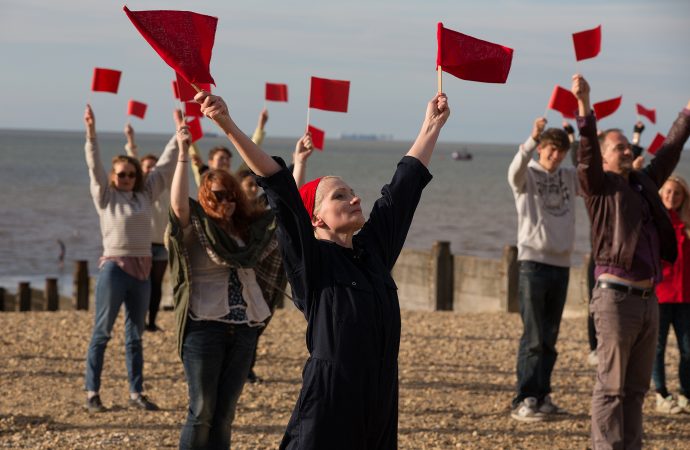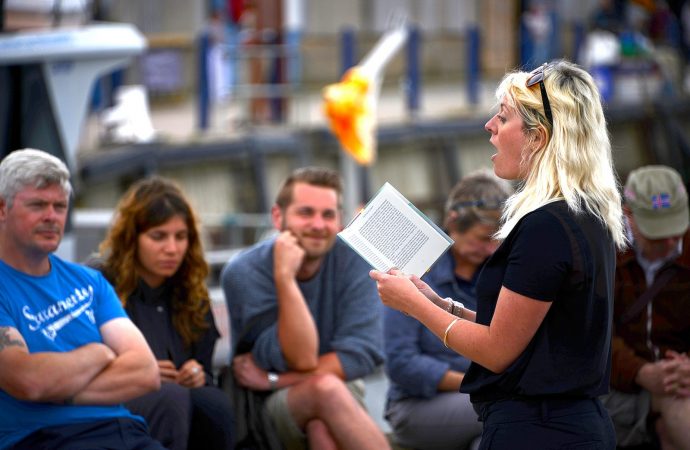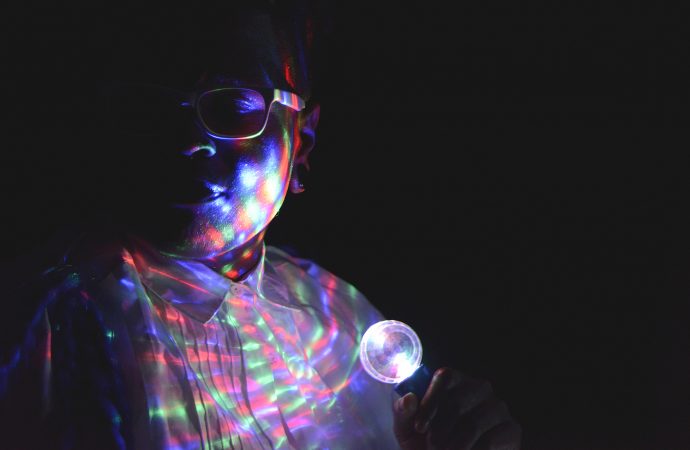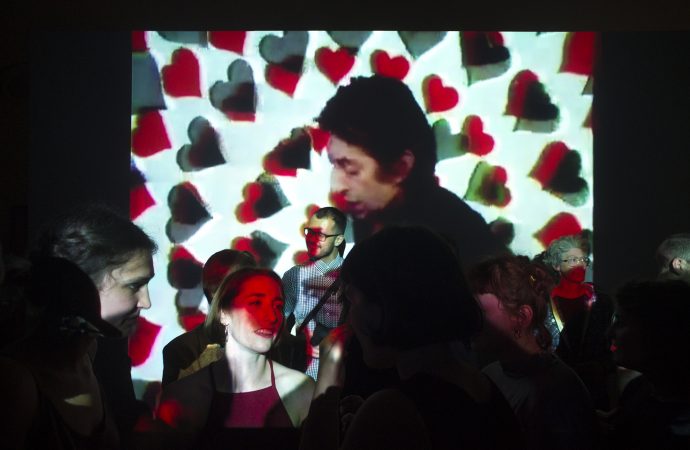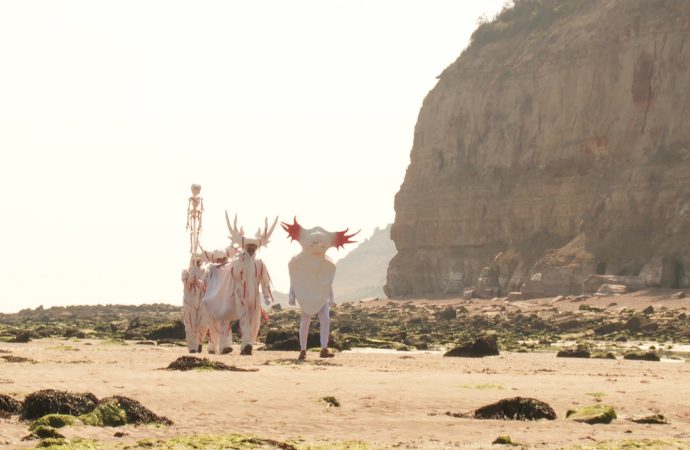Between 2002 and 2022, Whitstable Biennale brought people together to experience some of the most experimental new visual art being made in the UK in film and performance.
It developed an international reputation for developing experimental new work, working closely with artists early in their career to create new and experimental works, made slowly in and with the small coastal town of Whitstable. Artworks, in performance and film, were woven into the fabric of the town, the idiosyncratic halls and huts, the alleyways and oyster beds, the working harbour and the steep shingle shoreline.
Cement Fields has grown out of Whitstable Biennale, which, in 2018, joined Arts Council England’s National Portfolio in acknowledgement of a wider remit to work across North Kent.
Editions
Visit whitstablebiennale.com to see the full festival archive.
